


Framed or unframed, desk size to sofa size, printed by us in Arizona and Alabama since 2007. Explore now.
Shorpy is funded by you. Patreon contributors get an ad-free experience.
Learn more.

- Details, Details
- What's that building to the left of the tower?
- Coal Barges
- Bromo-Seltzer
- Inner harbor
- The Basin
- What a headache!
- Giant stepladder?
- Baldwin 62303
- Baldwin VO-1000
- Cold
- No expense spared
- Tough Guys
- Lost in Toyland
- And without gloves
- If I were a blindfolded time traveler
- Smoke Consumer Also Cooks
- Oh that stove!
- Possibly still there?
- What?!?
- $100 Reward
- Freeze Frame
- Texas Flyer wanted
- Just a Year Too Soon
- WWII -- Replacing men with women at the railroad crossing.
- Yes, Icing
- You kids drive me nuts!
- NOT An Easy Job
- I wonder
- Just add window boxes
Print Emporium
Kodachromes
Pie Town Dugout: 1940
![Pie Town Dugout: 1940 October 1940. "Mr. Leatherman, homesteader, coming out of his dugout home at Pie Town, New Mexico." View full size. 4x5 Kodachrome transparency by Russell Lee. Another example of the dugout-style structure used for the homesteader dwellings and church in the Dead Ox Flat photos. Before industry and technology gave us sawmills and frame houses, this is how the average person lived in much of the world. The dugout or pit house, with sod roof, log walls and earthen floor, is among the most ancient of human dwellings -- at some point in history your ancestors lived in one. Especially popular among 19th-century settlers in the Great Plains and deserts of the West and Southwest, where trees and other building materials were scarce, dugouts were warmer in winter and cooler in summer than above-ground structures; just about anywhere in North America the ground temperature three feet down is 55 degrees regardless of the season. [Addendum: This picture was taken using Kodachrome sheet film (5 inches by 4 inches) and (probably) a Graflex Speed Graphic press camera. The image you see here was scanned from the positive transparency itself, not a print.]](https://www.shorpy.com/files/images/1a34165u_0.preview.jpg)
October 1940. "Mr. Leatherman, homesteader, coming out of his dugout home at Pie Town, New Mexico." View full size. 4x5 Kodachrome transparency by Russell Lee. Another example of the dugout-style structure used for the homesteader dwellings and church in the Dead Ox Flat photos. Before industry and technology gave us sawmills and frame houses, this is how the average person lived in much of the world. The dugout or pit house, with sod roof, log walls and earthen floor, is among the most ancient of human dwellings -- at some point in history your ancestors lived in one. Especially popular among 19th-century settlers in the Great Plains and deserts of the West and Southwest, where trees and other building materials were scarce, dugouts were warmer in winter and cooler in summer than above-ground structures; just about anywhere in North America the ground temperature three feet down is 55 degrees regardless of the season. [Addendum: This picture was taken using Kodachrome sheet film (5 inches by 4 inches) and (probably) a Graflex Speed Graphic press camera. The image you see here was scanned from the positive transparency itself, not a print.]
- 29 comments
- 153145 reads
Pie Town Garden: 1940
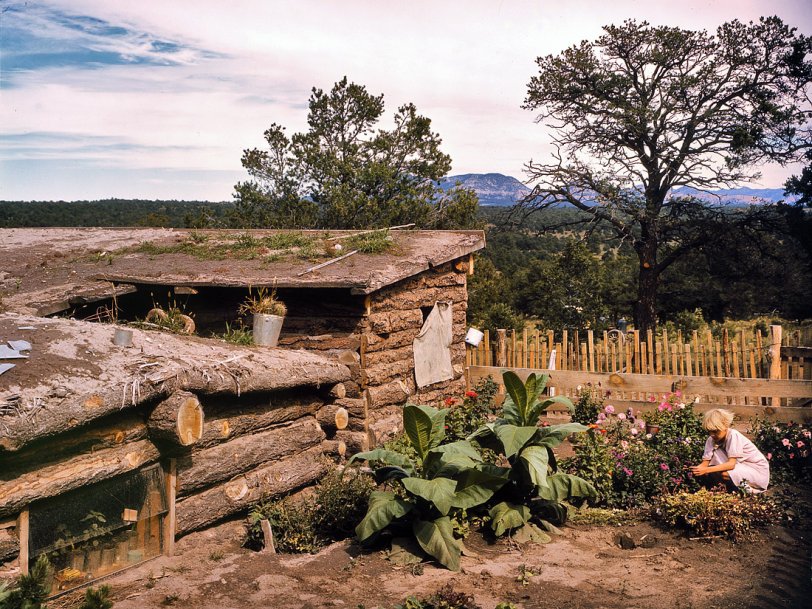
September 1940. Garden and dugout home of Jack Whinery, homesteader at Pie Town, New Mexico. View full size. 4x5 Kodachrome transparency: Russell Lee.
- 2 comments
- 21317 reads
Proviso South: 1942
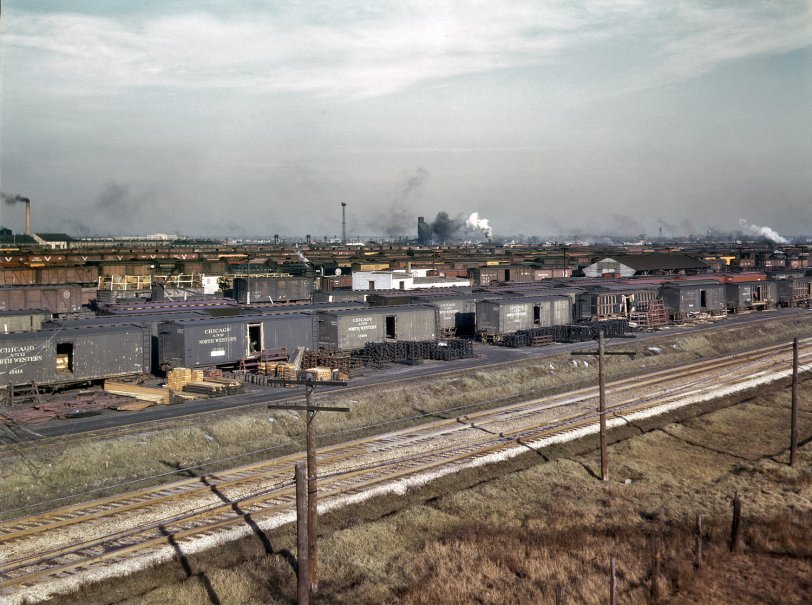
South Yards at the Chicago & North Western Proviso Yards. December 1942. View full size. 4x5 Kodachrome transparency by Jack Delano.
- 1 comment
- 18108 reads
Douglas Dam: 1942
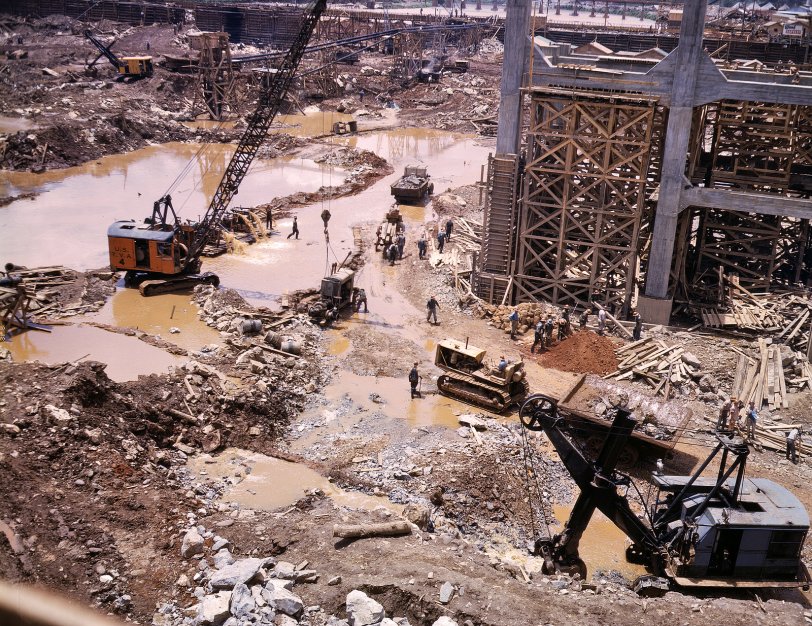
June 1942. Construction work at the Tennessee Valley Authority's Douglas Dam. View full size. 4x5 Kodachrome transparency by Alfred Palmer.
- 2 comments
- 29180 reads
Herman Miller: 1958
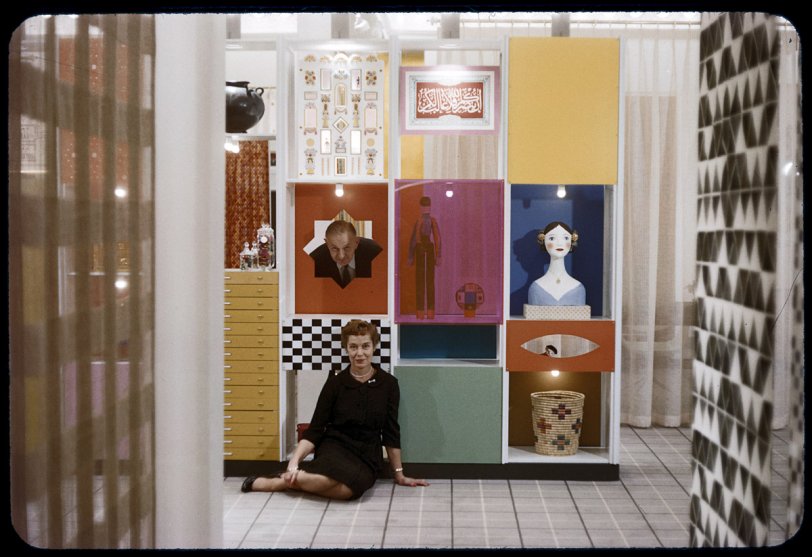
1958. Alexander and Susan Girard at the Herman Miller show in San Francisco. View larger. 35mm Kodachrome transparency, Charles & Ray Eames collection.
- 2 comments
- 19865 reads
Test Chair: 1946
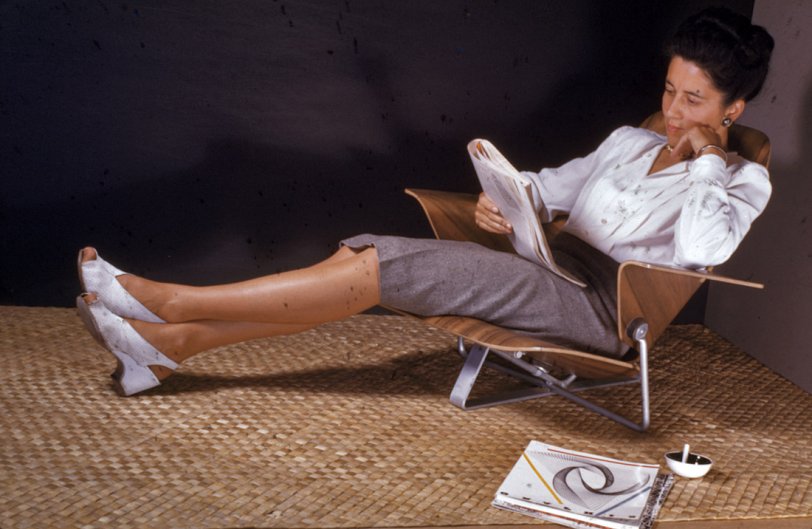
1946. Woman (Milah Birnie?) in an experimental plywood lounge chair. View full size. 35mm Kodachrome transparency, Charles and Ray Eames collection.
- 3 comments
- 19092 reads
Wingwomen: 1942
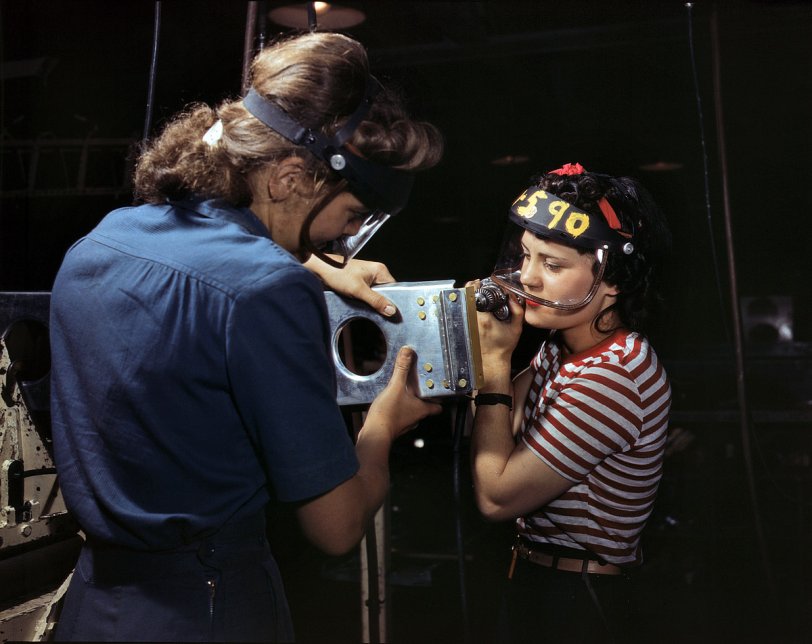
October 1942. North American Aviation workers assembling wing component for a P-51 fighter. View full size. 4x5 Kodachrome transparency by Alfred Palmer.
- 6 comments
- 23783 reads
Republic Steel: 1941
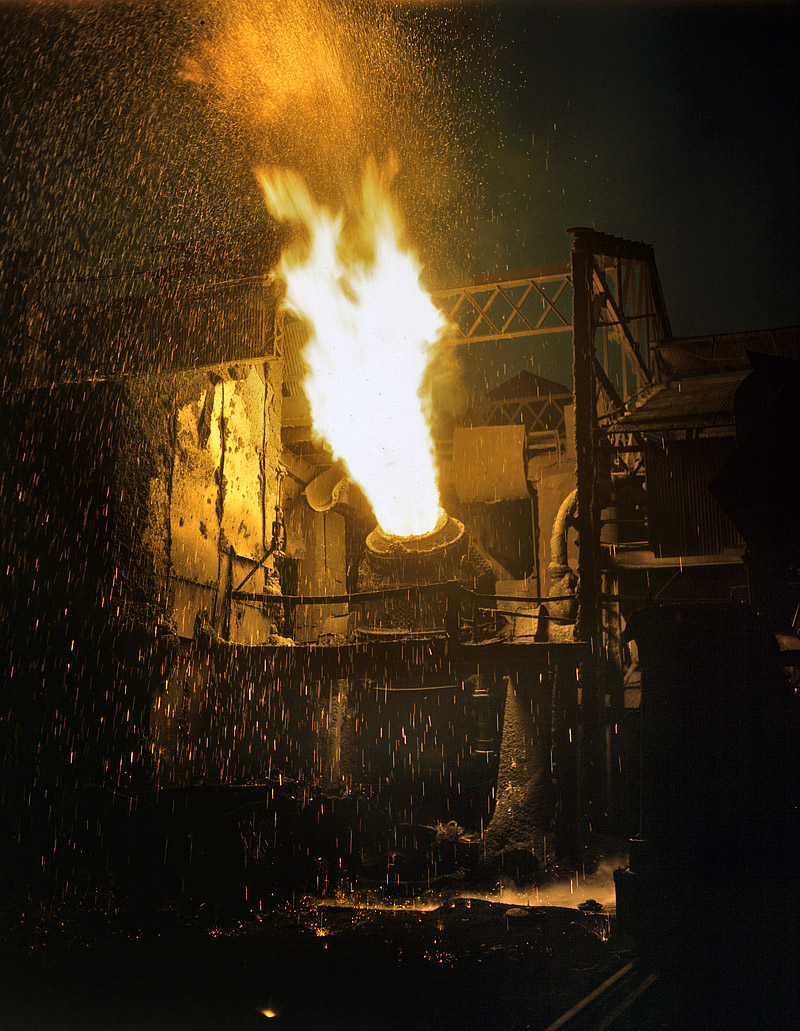
November 1941. Eastern Bessemer converter at Republic Steel in Youngstown, Ohio. Molten iron is charged with air to change it into steel for war essentials. View full size. 4x5 Kodachrome transparency by Alfred Palmer.
Fort Knox: 1942
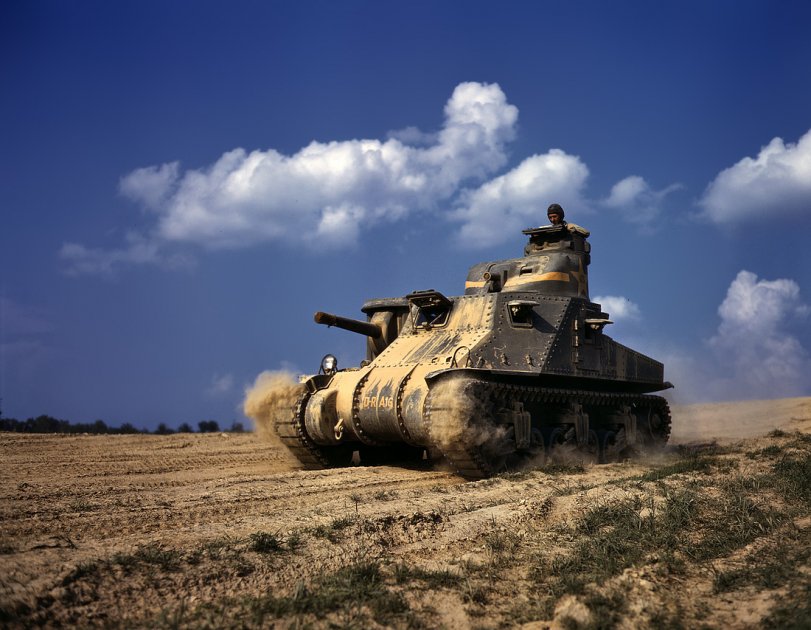
June 1942. M-3 tank in action at Fort Knox, Kentucky. View full size. 4x5 Kodachrome transparency by Alfred Palmer, Office of War Information.
- 3 comments
- 41202 reads
Whoosh: 1942
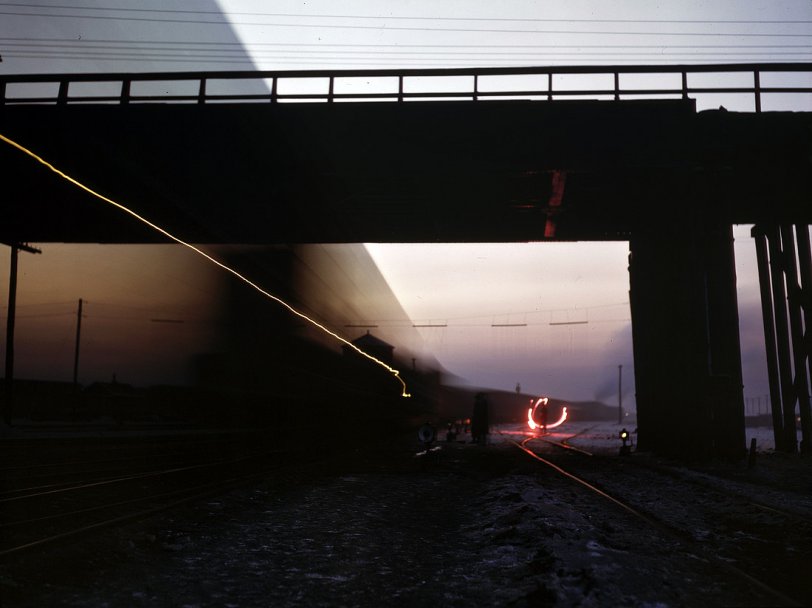
December 1942. Time exposure of repair tracks of the Chicago & North Western R.R. View full size. 4x5 Kodachrome transparency by Jack Delano.
Hanna Furnaces: 1942
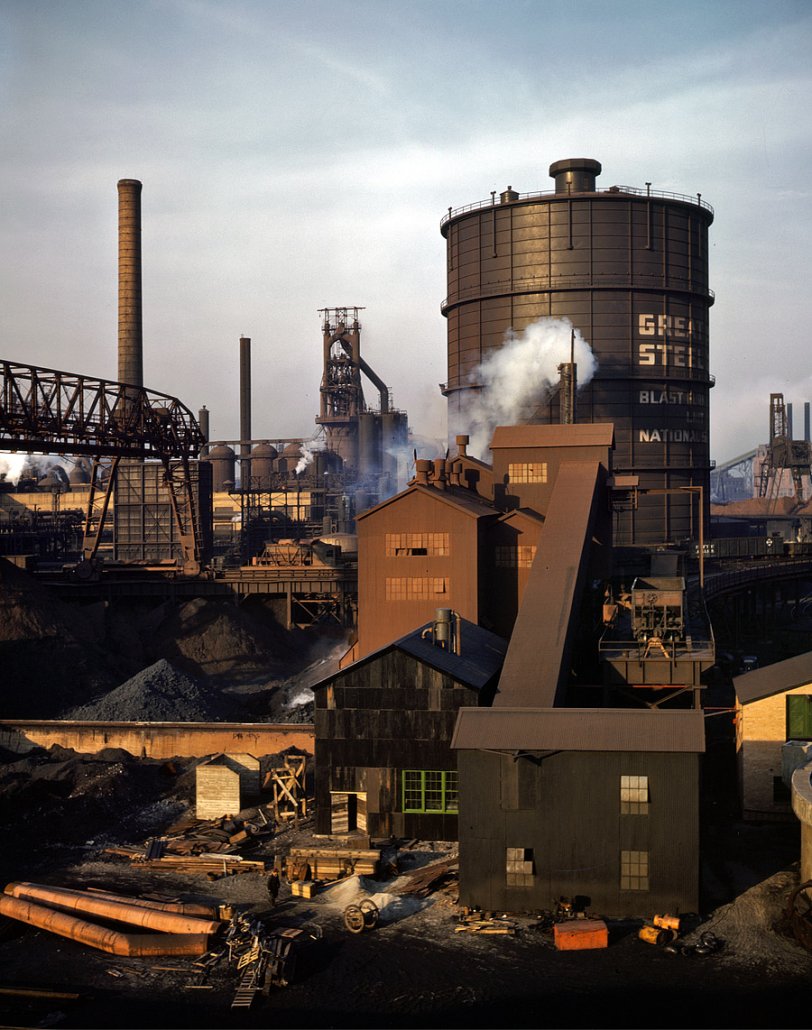
November 1942. Hanna furnaces of the Great Lakes Steel Corporation, Detroit. General view showing tank which stores gas from the coke oven. Square building and extension in middle ground is where coal is fed to a feeder belt and then transferred to a storage place on top of the coke oven. The coal is then dropped into three inverted bottle-like containers and from there fed directly into the coke ovens. View full size. 4x5 Kodachrome transparency by Arthur Siegel.
- 4 comments
- 27425 reads
Etna: 1941
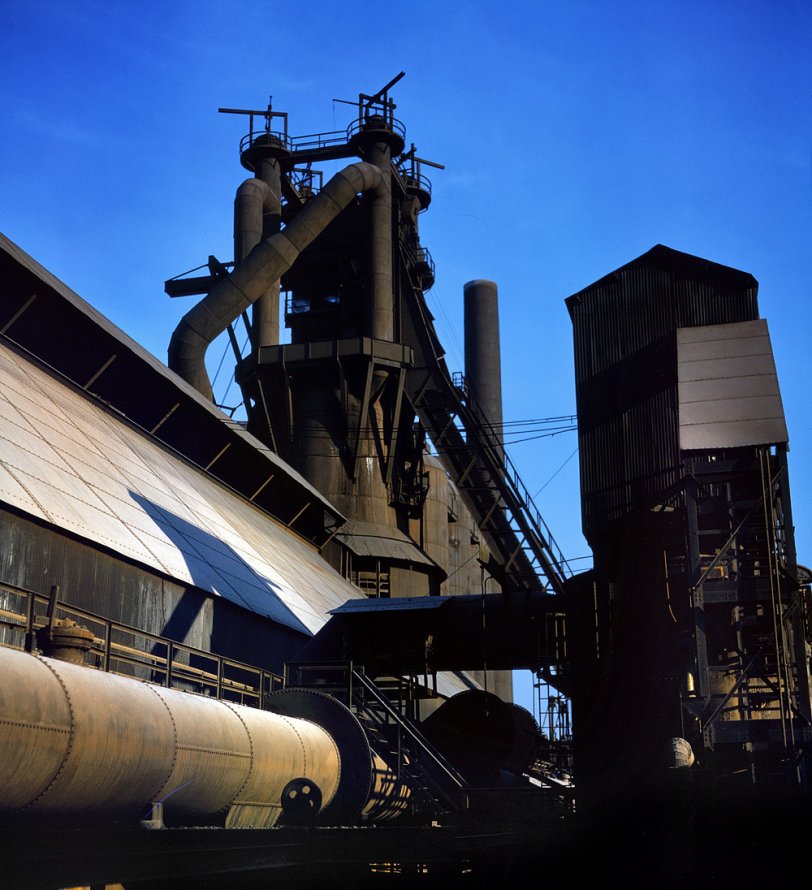
November 1941. Blast furnace at Carnegie-Illinois steel mill at Etna, Pennsylvania. View full size. 4x5 Kodachrome transparency by Alfred Palmer.
- 1 comment
- 14684 reads
Great Lakes Steel: 1942
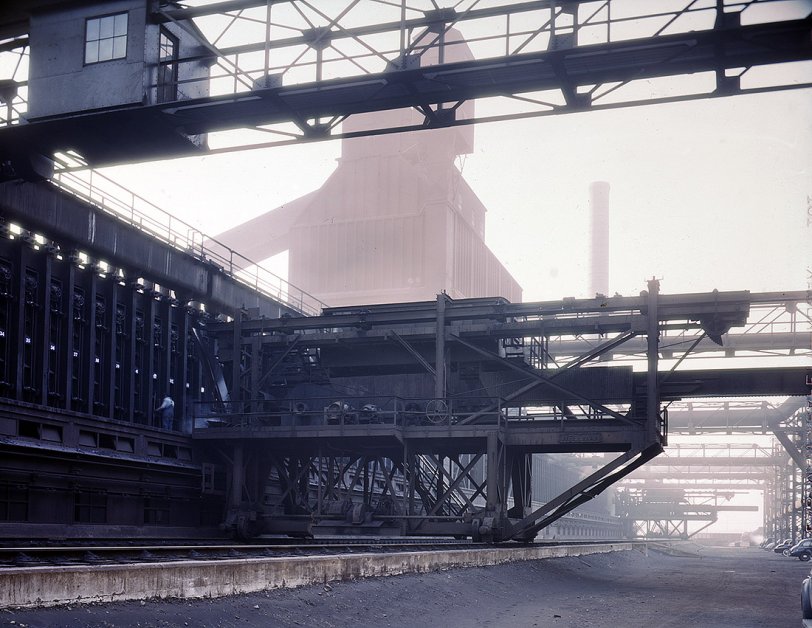
November 1942. "Hanna furnaces of the Great Lakes Steel Corp., Detroit. Coal pusher apparatus with coal storage building seen in the fog which constantly hangs over the plant." 4x5 Kodachrome transparency by Arthur Siegel. View full size.
- 10 comments
- 38560 reads
American Pineapple: 1942
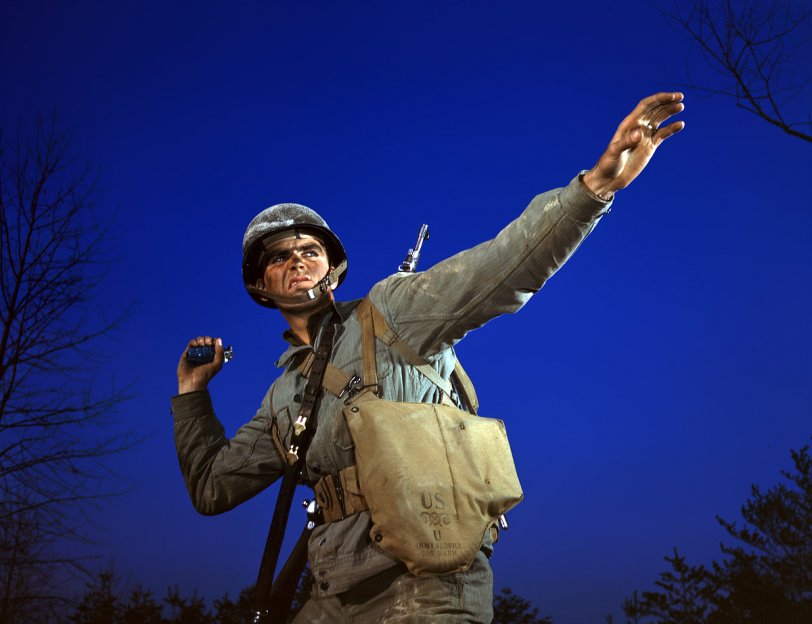
November 1942. "An American pineapple, of the kind the Axis finds hard to digest, is ready to leave the hand of an infantryman in training at Fort Belvoir, Va." View full size. 4x5 Kodachrome transparency by Alfred Palmer.
- 5 comments
- 34181 reads
Fort Belvoir: 1943
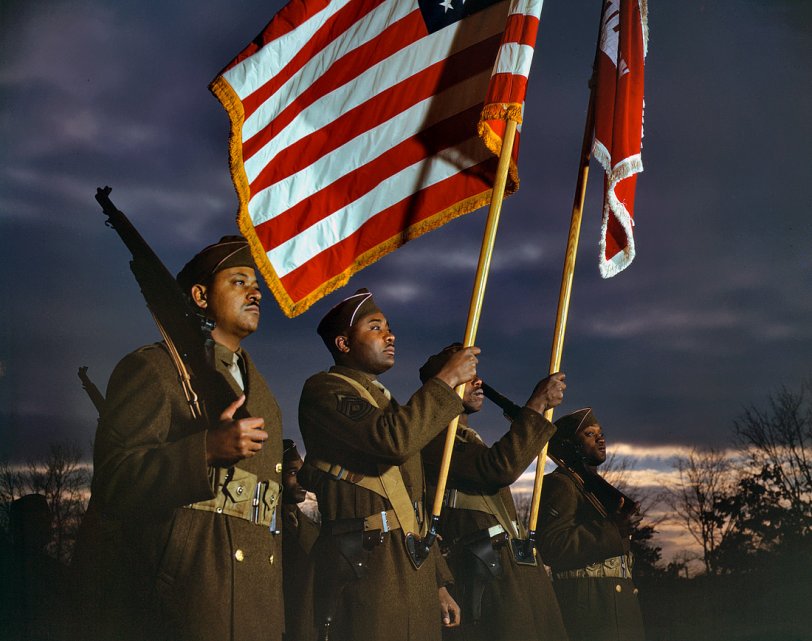
Engineers' color guard at Fort Belvoir, Virginia. March 1943. View full size. 4x5 Kodachrome transparency, photographer unknown.























